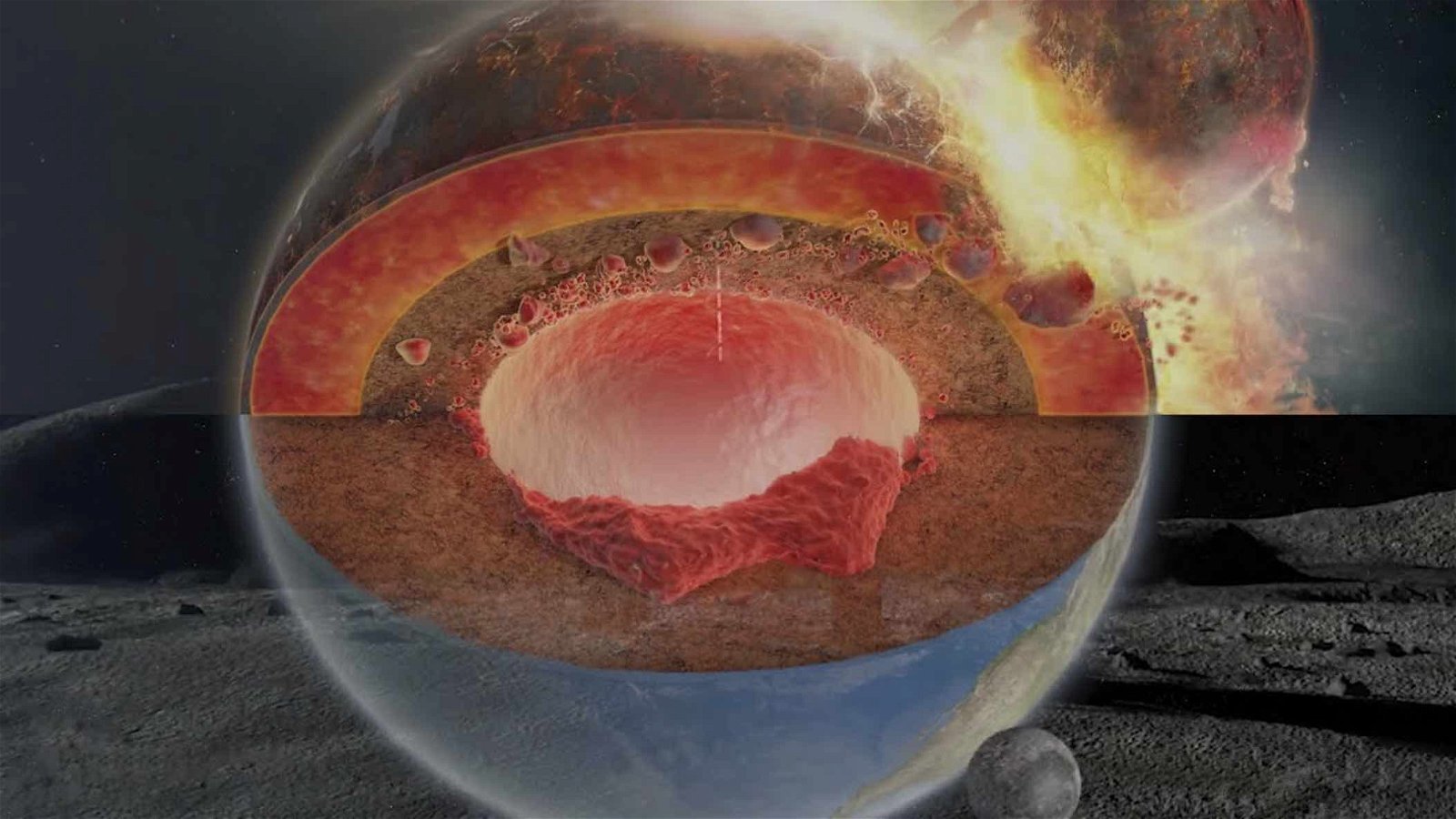In a recent study, scientists at the California Institute of Technology say that two massive, iron-rich structures lying close to Earth’s core are the last remains of Theia, a hypothesized ancient planet body whose cataclysmic collision with Earth is believed to have given birth to the Moon.
If validated, the discovery could revolutionize our understanding of Earth’s history and lunar origins by finally providing evidence of Theia’s final resting place—entombed in Earth’s deep mantle.
For years, the origins of the Moon have puzzled scientists. The dominant theory, known as the giant impact hypothesis, posits that the Moon formed from the debris of a massive collision between Earth and a mysterious lost planet roughly the size of Mars, aptly named Theia.
In Greek mythology, Theia was a pre-Olympian Titan and the mother of Selene, the goddess of the Moon.
According to the giant impact hypothesis, Theia orbited the Sun, nearly along the orbit of the proto-Earth. Theia was eventually perturbed away from that relationship by the gravitational influence of Jupiter, Venus, or both, resulting in a violent collision with Earth. Scientists propose the Moon was formed from ejected debris following this devastating impact.
Examination of lunar rock samples retrieved by Apollo astronauts were found to have very similar compositions to Earth’s crust, seemingly supporting the Theia-impact hypothesis. However, concrete remnants of this ancient planet have never been identified.
In a study published in the journal Nature on November 1, researchers from CalTech say that strange “blobs” near the center of the Earth could finally solve this planetary science mystery.
The structures in question, large low-velocity provinces (LLVPs), were first discovered in the 1980s. Seismic surveys revealed these continent-sized blobs, one beneath Africa and another under the Pacific Ocean, to have a unique seismic signature due to their high iron content. These differences caused seismic waves to slow down when passing through, indicating a composition distinct from the surrounding mantle.
For decades, the origin of these two dense regions has remained a mystery.
While attending a 2019 seminar on planet formation by Arizona State University professor Dr. Mikhail Zolotov, lead study author and CalTech postdoctoral scholar of geophysics, Dr. Qian Yuan, said he had an epiphany that the iron-rich impactor, Theia, could have become part of Earth’s mantle as LLVPs.
“Right after Mikhail had said that no one knows where the impactor is now, I had a ‘eureka moment’ and realized that the iron-rich impactor could have transformed into mantle blobs,” Dr. Yuan said in a statement.
Working with a multidisciplinary team, Dr. Yuan used advanced seismic analysis and geochemical modeling to form rigorous simulations of the chemical composition of Theia and what its impact with Earth might have looked like.
The simulations confirmed through collision physics that an impact between Theia and Earth would have led to the formation of the LLVPs in the Earth’s mantle and the Moon.
The findings suggest that rather than mixing uniformly with Earth’s interior, Theia’s debris settled into two distinct masses. Researchers likened this occurrence to wax blobs in a lava lamp, with the coolness of the lower mantle allowing these clusters to remain largely intact and descend towards the core.
The implications of this discovery extend beyond resolving a scientific debate, and understanding Theia’s remnants could offer unprecedented insights into Earth’s geodynamic behavior over geological timescales.
Beyond academia, the study stokes public imagination, piecing together a more complete narrative of our planet’s violent and chaotic past. It paints a fuller picture of the violent events that shaped not only Earth but also shed light on the enduring dance of celestial bodies that continues to play out across the cosmos.
Researchers say they plan to now delve deeper into the consequences of Theia’s materials in Earth’s ancient interior processes. This may include the influence on early plate tectonics, the formation of continents, and the origins of Earth’s oldest minerals.
“A logical consequence of the idea that the LLVPs are remnants of Theia is that they are very ancient,” said study co-author and CalTech professor of geology and geochemistry, Dr. Paul D. Asimow.
“It makes sense, therefore, to investigate next what consequences they had for Earth’s earliest evolution, such as the onset of subduction before conditions were suitable for modern-style plate tectonics, the formation of the first continents, and the origin of the very oldest surviving terrestrial minerals.”
Tim McMillan is a retired law enforcement executive, investigative reporter and co-founder of The Debrief. His writing covers defense, national security, and the Intelligence Community. You can follow Tim on Twitter: @LtTimMcMillan. Tim can be reached by email: tim@thedebrief.org or through encrypted email: LtTimMcMillan@protonmail.com

